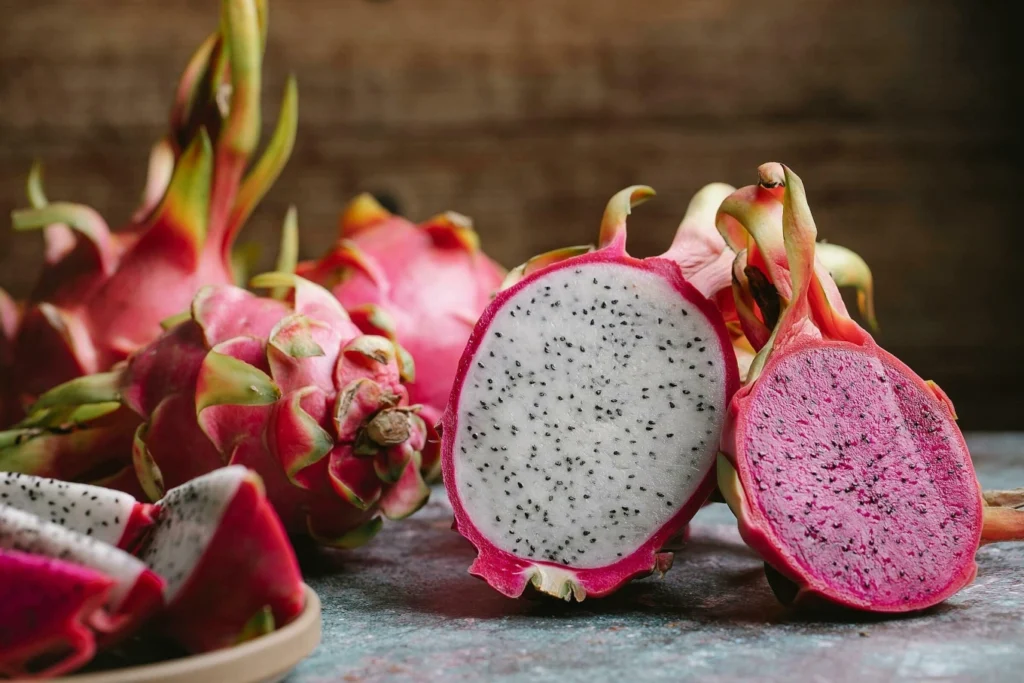Plant Care Expert Guides
Top 5 Easy Exotic Fruits You Can Grow at Home
Have you ever dreamed of biting into a fresh, juicy mango, dragon fruit, or papaya—grown right in your own backyard or even indoors? If you’re a gardening enthusiast, the idea of cultivating exotic fruits at home is both exciting and rewarding. But where do you begin? What fruits can you actually grow, and how can you create the right environment for them to thrive?
In this guide, I’ll walk you through the top easy 5 exotic fruits that you can grow at home, even if you don’t have a lot of space or live in a cooler climate. Let’s dive in and discover how you can transform your garden (or even your apartment) into your own tropical paradise!
Why Grow Exotic Fruits at Home?
Growing exotic fruits at home is not just a fun hobby, it offers a wide range of benefits. For starters, it allows you to enjoy fresh, homegrown fruit that is not only healthier but also more flavorful than anything you’d find at the supermarket. Plus, it can save you money in the long run, especially if you’re able to harvest multiple crops throughout the year.
Here are some compelling reasons to grow exotic fruits at home:
-
Fresh, organic produce: No pesticides or chemicals – just fresh, pure fruits.
-
Health benefits: Tropical fruits like papayas and mangoes are packed with essential nutrients, including vitamins A and C, antioxidants, and dietary fiber.
-
Sustainability: Growing your own fruits reduces food miles and carbon footprints, contributing to a greener environment.
-
Fun and rewarding: There’s something incredibly satisfying about growing your own food – and exotic fruits are often more rewarding to grow than standard varieties.
Top 5 Exotic Fruits You Can Grow at Home
1. Mango (Mangifera indica)

Mangoes are the quintessential tropical fruit, known for their rich, sweet flavor and vibrant color. While mango trees are often thought of as requiring vast tropical landscapes, you can grow them successfully at home too, especially in containers. Mango trees thrive in warm temperatures and plenty of sunlight, so if you live in a region that gets a lot of sun, growing a mango tree indoors or on a patio can be a great choice.
-
Growing Tips: Mango trees need well-drained soil and require full sun. Keep the tree in a warm spot with temperatures above 50°F, and be patient—it may take a few years before you see fruit, but the reward is worth the wait.
-
Why Grow Mangoes?: Not only do they taste amazing, but mangoes are also packed with antioxidants and are great for boosting immunity and digestion.
2. Dragon Fruit (Hylocereus undatus)
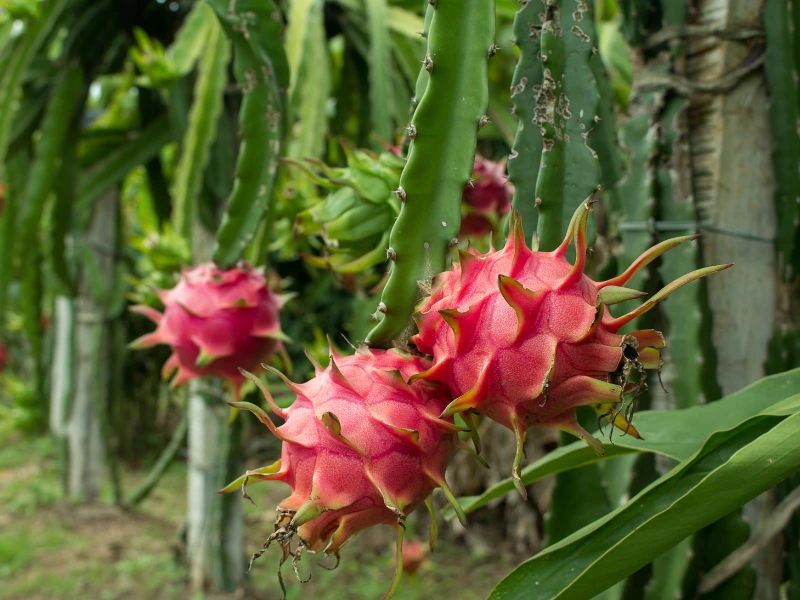
Dragon fruit, or pitaya, is a stunning cactus fruit that looks as exotic as it tastes. It’s often recognized by its vibrant pink skin and white, speckled flesh. Growing dragon fruit at home is relatively easy, and it can be done indoors or outdoors, provided you have a sunny space.
-
Growing Tips: Dragon fruit plants are low-maintenance and thrive in well-drained soil. They require lots of light, so placing them near a window or in a sunny garden is ideal. This cactus plant also grows best in warmer climates but can thrive in containers for colder climates.
-
Why Grow Dragon Fruit?: Dragon fruit is not only delicious but also rich in vitamin C, fiber, and antioxidants that promote healthy digestion and skin.
3. Papaya (Carica papaya)
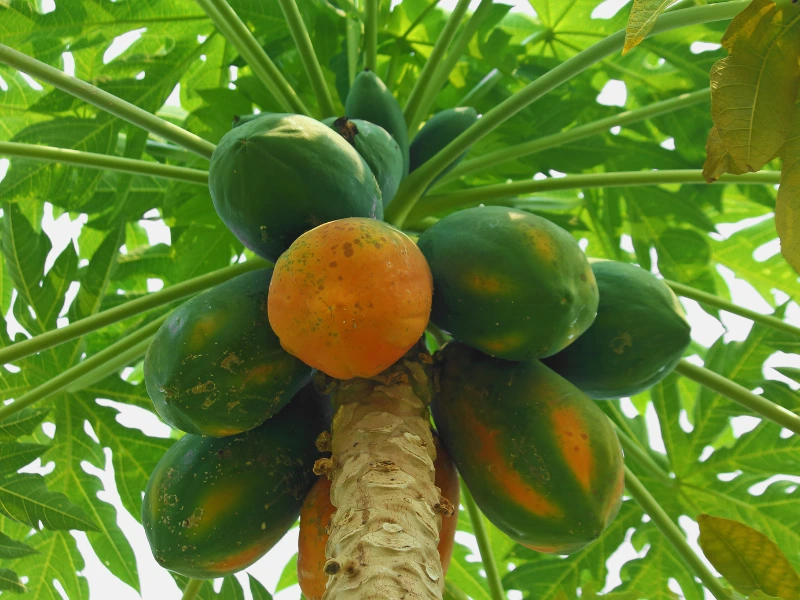
Papayas are another tropical fruits, known for their sweet, tangy flavor and vibrant orange flesh. These fast-growing trees can be grown indoors or in larger containers if you don’t have a lot of outdoor space. Papayas require warmth and full sunlight to thrive, but they are also relatively forgiving if you live in a region with mild winters.
-
Growing Tips: Ensure your papaya tree gets plenty of sunlight, at least 6 hours a day. Papayas need fertile, well-drained soil, and you should water them regularly. However, be mindful not to overwater, as this can cause root rot.
-
Why Grow Papayas?: Papayas are loaded with vitamin C, folate, and antioxidants. They’re also famous for containing an enzyme called papain, which aids in digestion.
4. Pineapple (Ananas comosus)
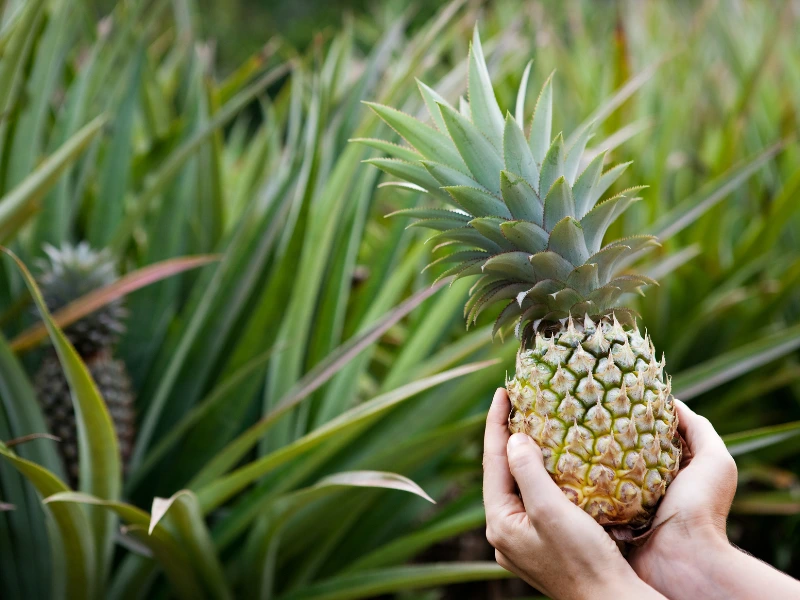
Pineapples are another exotic fruit that you can easily grow at home, even if you don’t have a lot of space. Unlike other tropical fruits, pineapples are typically grown from the crown of the fruit itself, making them perfect for gardeners looking for a quick and low-maintenance project.
-
Growing Tips: To grow pineapples at home, simply cut off the top of a ripe pineapple and place it in water until roots develop. Once the roots are established, transplant it into a container with well-draining soil. Pineapples need lots of sunlight and warm temperatures to thrive.
-
Why Grow Pineapples?: Pineapples are packed with vitamin C, manganese, and antioxidants that help improve immune function and promote digestion. Plus, they add a tropical flair to any garden or patio!
Related: Everything You Need to Know About the Sugarloaf Pineapple.
5. Guava (Psidium guajava)
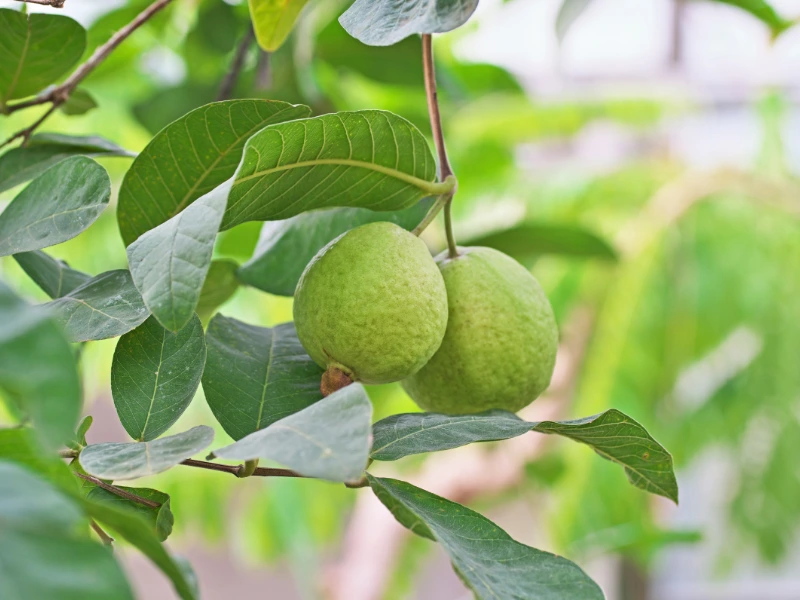
Guavas are tropical fruits with a unique sweet-tart flavor and an abundance of health benefits. They are incredibly easy to grow at home, whether you’re in a tropical zone or a cooler climate (when grown indoors). Guava trees can be grown in containers, making them ideal for small gardens or patios.
-
Growing Tips: Guavas need warm temperatures to grow well. They prefer well-drained soil, and like mango trees, they require full sun. Guava trees are relatively low-maintenance, making them an excellent option for beginner gardeners.
-
Why Grow Guavas?: Guavas are rich in dietary fiber, vitamin C, and antioxidants, making them great for digestion, skin health, and overall wellness.
Tips for Growing Exotic Fruits at Home
Growing exotic fruits at home doesn’t have to be difficult. Here are some essential tips to help you get started:
-
Choose the Right Space: Exotic fruits need plenty of sunlight to grow. Be sure to place your plants in areas where they can receive full sunlight (at least 6–8 hours per day).
-
Use Containers: If you don’t have a backyard, many tropical fruits can be grown in containers, making them perfect for balconies, patios, or even indoor spaces with enough natural light.
-
Water Wisely: While these fruits love sunlight, they don’t necessarily enjoy being constantly watered. Be sure to water your plants according to their specific needs and allow the soil to dry out between watering.
-
Fertilize: Exotic fruits, especially in containers, require regular fertilization to thrive. Use organic compost or a balanced fertilizer to promote healthy growth.
Challenges of Growing Exotic Fruits at Home
Growing exotic fruits can be challenging, especially if you live in a climate that is colder than ideal for tropical plants. Some of the most common challenges you might face include:
-
Cold temperatures: Exotic fruits require warmth to thrive, and frost can kill these plants. Be prepared to bring them indoors during winter months if you live in a cooler region.
-
Space constraints: While many tropical fruits can be grown in containers, they still require a decent amount of space to grow properly. Be sure to plan accordingly.
However, with patience, care, and the right techniques, you can overcome these challenges and enjoy fresh, homegrown exotic fruits year-round!
Conclusion
Growing exotic fruits at home is a rewarding and fun experience. Whether you’re cultivating mangoes, dragon fruit, papayas, pineapples, or guavas, these fruits can provide you with not only delicious flavors but also numerous health benefits. By following the right growing techniques and ensuring that your plants get the right amount of sunlight, water, and care, you can create your very own tropical paradise at home.
So why not give it a try? Start small, choose the right fruits for your climate, and enjoy the satisfaction of growing your own fresh, exotic produce!
Frequently Asked Questions
-
What exotic fruits can I grow indoors?
-
You can grow dragon fruit, papayas, and even pineapples indoors if you have a sunny spot.
-
-
Can I grow tropical fruits in containers?
-
Yes! Many exotic fruits, such as mangoes and guavas, can be grown in containers.
-
-
How long does it take to grow exotic fruits at home?
-
It varies by fruit, but some, like dragon fruit, can bear fruit in as little as 1-2 years, while others, like mangoes, may take 3-5 years.
-
-
What climate is best for growing exotic fruits?
-
Tropical and subtropical climates are ideal for growing exotic fruits, but many can be grown in containers indoors in colder regions.
-
By growing your own exotic fruits at home, you not only enjoy fresh, healthy produce but also the joy and satisfaction of nurturing plants and watching them grow. Ready to start your own tropical fruit garden? Let’s make it happen!

